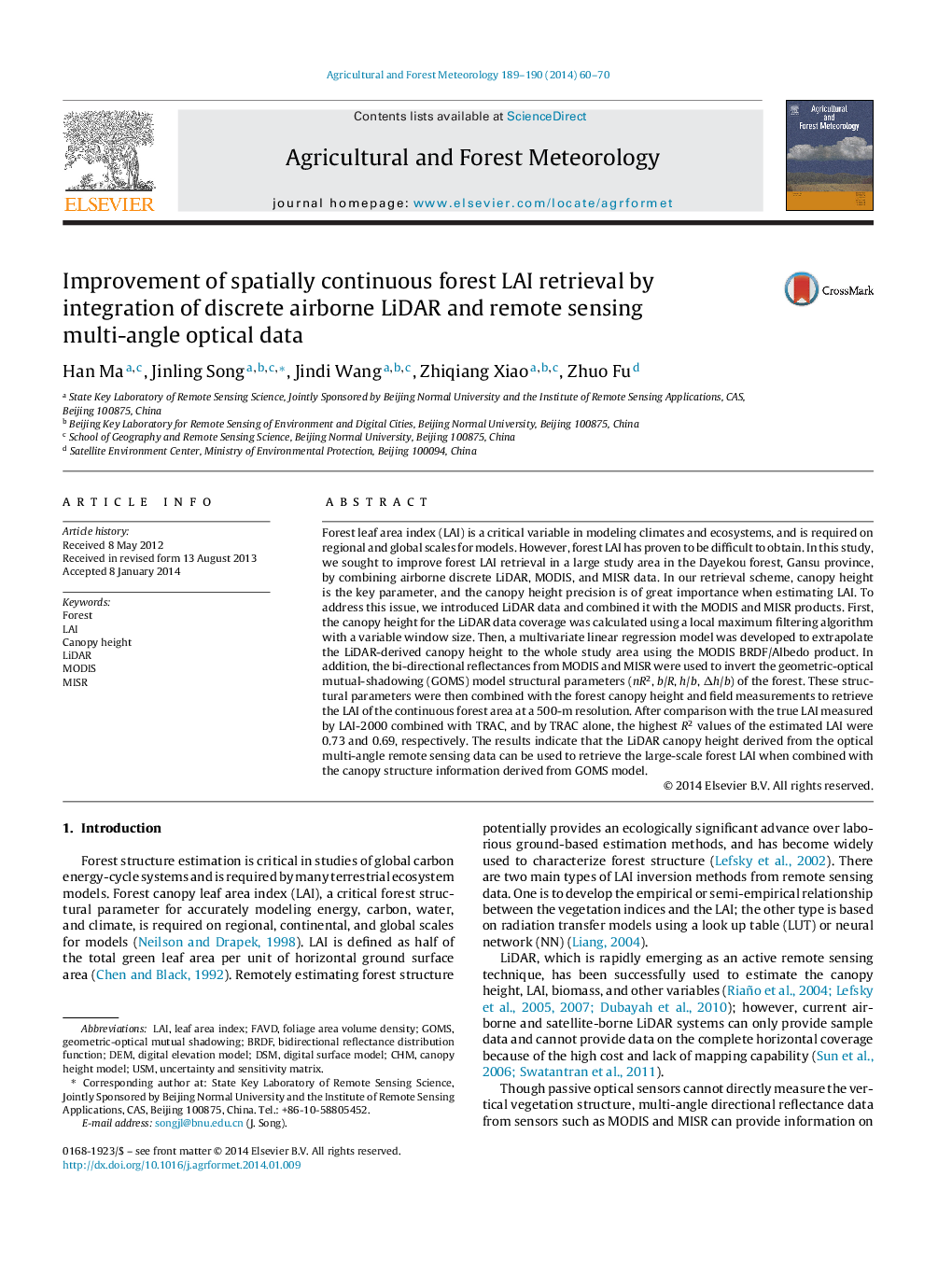| Article ID | Journal | Published Year | Pages | File Type |
|---|---|---|---|---|
| 6537623 | Agricultural and Forest Meteorology | 2014 | 11 Pages |
Abstract
Forest leaf area index (LAI) is a critical variable in modeling climates and ecosystems, and is required on regional and global scales for models. However, forest LAI has proven to be difficult to obtain. In this study, we sought to improve forest LAI retrieval in a large study area in the Dayekou forest, Gansu province, by combining airborne discrete LiDAR, MODIS, and MISR data. In our retrieval scheme, canopy height is the key parameter, and the canopy height precision is of great importance when estimating LAI. To address this issue, we introduced LiDAR data and combined it with the MODIS and MISR products. First, the canopy height for the LiDAR data coverage was calculated using a local maximum filtering algorithm with a variable window size. Then, a multivariate linear regression model was developed to extrapolate the LiDAR-derived canopy height to the whole study area using the MODIS BRDF/Albedo product. In addition, the bi-directional reflectances from MODIS and MISR were used to invert the geometric-optical mutual-shadowing (GOMS) model structural parameters (nR2, b/R, h/b, Îh/b) of the forest. These structural parameters were then combined with the forest canopy height and field measurements to retrieve the LAI of the continuous forest area at a 500-m resolution. After comparison with the true LAI measured by LAI-2000 combined with TRAC, and by TRAC alone, the highest R2 values of the estimated LAI were 0.73 and 0.69, respectively. The results indicate that the LiDAR canopy height derived from the optical multi-angle remote sensing data can be used to retrieve the large-scale forest LAI when combined with the canopy structure information derived from GOMS model.
Keywords
Related Topics
Physical Sciences and Engineering
Earth and Planetary Sciences
Atmospheric Science
Authors
Han Ma, Jinling Song, Jindi Wang, Zhiqiang Xiao, Zhuo Fu,
